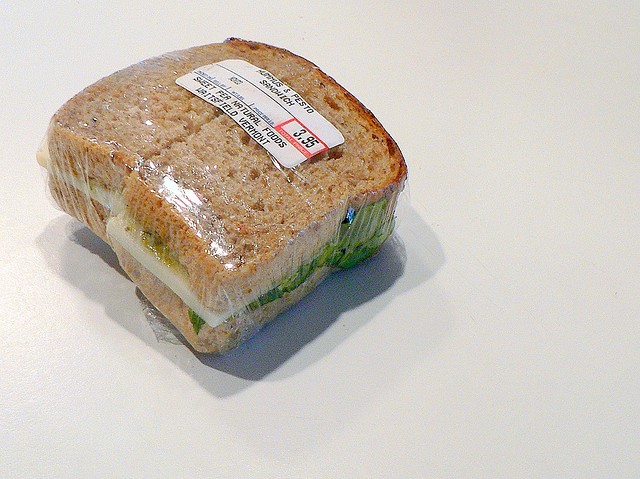 Todd Cherches | Comments Off |
Todd Cherches | Comments Off | Entries in Cherches (2)
Knowledge comes not from answering questions…but from questioning answers.
 Monday, September 19, 2016 at 3:29PM
Monday, September 19, 2016 at 3:29PM In Defense of the Feedback Sandwich
 Wednesday, July 30, 2014 at 8:56PM
Wednesday, July 30, 2014 at 8:56PM  A number of supposed experts have recently written blog posts bashing the Feedback Sandwich technique.
A number of supposed experts have recently written blog posts bashing the Feedback Sandwich technique.
Why? Because they have absolutely no idea what they're talking about.
(How's that for NOT using the feedback sandwich! :))
In this post I talk about why the Feedback Sandwich is -- by far -- the most palatable way to give someone the feedback you think they need to hear...
```````````````````````````````````````````````````````````````````````````````````````````
“The Feedback Sandwich sucks!”
Or…
“In regard to the Feedback Sandwich approach, it definitely has its merits. It’s important to mention, however, that this method is not appropriate for all situations and, when misused, can often be ineffective and undermine your intentions. But it’s true that, in many cases, there’s value in pointing out what someone’s done right, before pointing out what they’ve done wrong – and then ending on a positive note.”
If you were me, which comment would you prefer to receive from someone who disagreed with this blog post? Which do you think would be more powerful, impactful, and effective? Which would give you, as the deliverer of the feedback, more credibility?
The first example is what many people, including a lot of bosses (and blog commenters!) do: They just slam you or flame you with their opinion of why you’re wrong.

The Secret Recipe: How to Use the Feedback Sandwich
The second is an example of the Feedback Sandwich approach. In brief, it’s referred to, metaphorically, as a four-part “sandwich” because the feedback (the “meat” of the message) is delivered to the recipient using cushioning (the “buns”) to soften the blow:
[1] The top bun represents starting on a positive note, for example: “Nice job on your presentation, I really thought your content and delivery were great.”
[2] The lettuce represents your transition, for example, a pause, or something like: “One area of improvement might be…”
[3] The meat represents the main substance of your feedback message: “While I really liked your content, I thought that your PowerPoint slides could use some improvement…”
[4] And the bottom bun represents your close, which might be something like: “Again, overall, I thought you did a really great job and once you improve your slides I think your next presentation is going to be terrific!”
The above message can be delivered in a 30-second comment, or over the course of a 30-minute conversation.
Why the Critics are Wrong
Like any tool, the Feedback Sandwich is not intended for all occasions. That’s obvious. But when used with the right person, at the right time, in the right situation, and in the right way, it is by far the most productive and effective way to give someone feedback. Even something as simple as responding to a waiter who asks how everything was: “The food was delicious, as always. We did want to mention, though, that we thought the music was a little too loud, which made it hard to talk. But thank you for your great service tonight” – is an example of using the Feedback Sandwich approach to deliver your message in a productive way.
That’s why it’s so shocking to me when certain supposed experts continue to bash the entire model outright. I’ve even heard it referred to as a “Compliment Sandwich, a “B.S. Sandwich,” and a “Crap Sandwich.” The people who denigrate this model simply do not get it.
It’s not: “Hey I really like your new haircut! By the way, you’re the worst employee I’ve ever had. But, again, you look really nice today.” The “buns” need to be genuine, sincere, productive, and relevant to the issue you are providing feedback on. It’s not about flattery or sugar-coating; it’s about delivering your feedback message in a way that is most productive, most effective, and most “digestible” for the recipient.
Additionally, the thickness of the buns needs to be proportional to the person and the situation. Sometimes a “Great job!” is all that is needed to start and finish with. Other times (in many, if not most, cases), more specific and detailed remarks are warranted.
When the Sandwich Doesn’t Work
So when is the Feedback Sandwich NOT the best approach? If someone really screwed up, you are not going to use the Feedback Sandwich:
“Billy, you’re a good boy. But I’ve asked you numerous times not to play with matches, and now you’ve burnt our entire house down. So thank you for not doing that again in the future.”
“Peter, you’re a good guy and one of my favorite employees. But I’ve noticed that lately you’ve been falsifying pretty much all the data in your TPS reports. So I’m gonna need you to stop doing that, ok?”
When it comes to integrity or policy violations, safety issues, or recurring problems, of course you are not going to “sandwich” your feedback; you are going to be blunt and direct: “Peter, we have a serious problem”; or “Billy, we need to talk.” In those situations, you would omit the buns and get right to the meat. Cushioning your message here would be completely unnecessary, inappropriate, and ineffective. Just because it’s not a one-size-fits-all solution, the Sandwich’s critics are wrong to suggest that we should reject this model outright.

Dos and Don’ts
Here’s a simple and common work situation in which it’s clear that the Feedback Sandwich would be a good approach for a manager to take:
Let’s say you asked one of your people – a relatively new employee – to write a proposal and then show it to you before sending it out to a client. Upon reading it, you see that the person worked hard on it, did their research, and got all the facts right. The problem is that in their haste to get it to you, they didn’t take the time to proofread it, and so it contains a few small grammatical errors and minor typos. So how do you deliver this feedback message?
You can just say, “I read your proposal and it’s filled with errors. You need to fix it.” Or you can be sarcastic and say something like, “Have you ever heard of spellcheck?”
Or you can use the Feedback Sandwich. “Thanks for getting this to me so fast – I really appreciate it. However there are a few typos and grammatical errors, so I need you to proofread it, correct the mistakes, and get it back to me within the hour so we can get it out before the end of the day. When we’re sending something out to a client, speed counts – but it’s equally important to make sure it’s perfect before it goes out the door. But as this was your first time, overall, you did a nice job.”
Simple and straight-forward, gets your point across regarding the necessary corrective actions, keeps the minor mistakes in perspective, and – often overlooked, but equally important – restores the employee’s confidence and morale in spite of the (easily-fixable) errors. As the manager, it’s important to ask yourself: Is the purpose of the feedback to slam the person for what they got wrong or to acknowledge what was done well, fix the problem, and help them to improve for the future?
“It Sucked”: A Case Study
Earlier in my career, when I worked for one of the major TV networks, my boss’s boss asked me on a Friday to write up “coverage” (a review and recommendation report) on a new pilot script and get it back to him on Monday. (*He was asking me because my boss was out on vacation). Excited to be given this first-time opportunity and wanting to make a good impression, I spent all weekend on it and had it on his desk first thing Monday morning.
When Tuesday afternoon rolled around and I hadn’t heard anything back (as we know, silence is often the worst kind of feedback), I knocked on his door and said: “Hi Jonathan, I was just wondering if you had a chance to read my coverage.”
In response, he rummaged through a pile of papers, finally found it, glanced at it, and then frisbeed it across his desk at me, hitting me in the shins, and said, “It sucked.”
As he went back to doing what he was doing before I walked in, and with the report I was previously so proud of now resting on my shoes, I meekly bent down, picked it up, and slithered back to my desk, crushed and demoralized, with my tail between my legs. I thought I had done such a good job, but I left work that day wondering if I should start exploring new career possibilities.
The next day, though, I still felt like I needed to get some feedback on what I had done so wrong. And I figured I had nothing to lose. So when 6:00pm rolled around, when most others had gone home, I somehow got up the courage to go into his office and knock on his open door again:
“Jonathan, do you have a minute? I was just wondering what was wrong with the coverage I wrote – I thought I had done a pretty good job.”
His response: “You did a great job! Your writing is terrific – it’s always terrific – and you had some really great insights. I just really hated the script. But, the report, itself, was fine.”
Maybe he could have said that the first time? In retrospect, what he gave me the first time was the meat; the second time, the same meat…but presented in a sandwich. So, although the outcome was the same (he rejected the script I was recommending), the validation of my work made me feel a million times better, and left me eager for the next opportunity to show what I could do. That’s the power of the Feedback Sandwich in action.
So while there are a lot of different feedback techniques out there, all with their respective pros and cons, the Feedback Sandwich is just one way – a powerful and effective way – to get your message across.
Think about it. If you are on the receiving end, would you rather someone take a hot, sizzling, greasy burger off the grill and place it in your bare hands…or would you rather that they neatly present it to you between two nice, fluffy buns?
We’d love to hear your thoughts in the comments section below. But if you do, we hope you’ll be kind enough to deliver it in a nice little sandwich…
 Todd Cherches | Comments Off |
Todd Cherches | Comments Off |  Cherches,
Cherches,  Feedback,
Feedback,  Feedback Sandwich,
Feedback Sandwich,  coaching,
coaching,  leadership in
leadership in  Communication
Communication 
